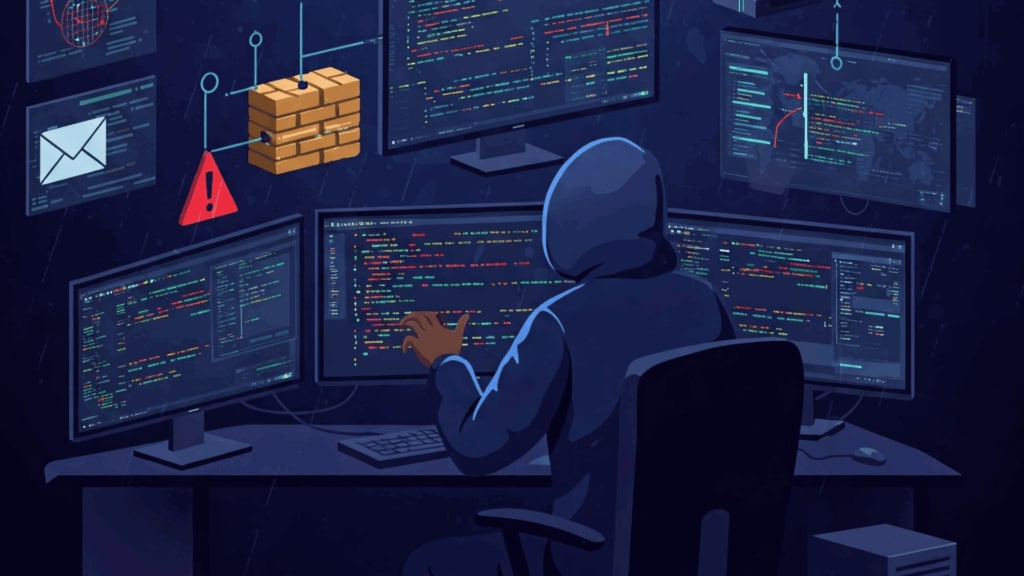
The term “cyberattack” often evokes images of sudden breaches, where hackers rush in to steal or disrupt information. However, one of the most insidious and dangerous forms of cyber threat operates in the shadows — quietly, methodically, and over an extended period. These calculated assaults are Advanced Persistent Threats (APTs) — attacks that are slow-burning, stealthy, and alarmingly effective.
APTs are not your typical hacks. Highly skilled attackers, often state-sponsored or well-funded, carry out these attacks. They invest time, intelligence, and technological expertise to infiltrate a network. Once inside, they remain undetected, surveilling, stealing, or sabotaging. Their goals range from political espionage to economic sabotage, targeting corporations, critical infrastructure, and government systems..
As these threats evolve, organisations must stay one step ahead. This article unpacks what APTs are, how they infiltrate and exploit systems, and what organisations can do to defend themselves. We’ll explore the anatomy of these attacks, identify the groups most at risk, and discuss multi-layered security strategies that include traffic monitoring, phishing defense, human awareness, and advanced tools like captcha.eu, which help filter automated traffic and reduce vulnerabilities.
Understanding APTs isn’t just a technical necessity — it’s a business imperative. While no single solution can fully protect against APTs, knowledge and proactive defense can help your organisation stay resilient in the face of these persistent digital threats.
Table of contents
What Exactly is an Advanced Persistent Threat (APT)?
An Advanced Persistent Threat is not just one specific type of attack; rather, it refers to the tactics employed by attackers who operate with a clear, long-term objective in mind. Typically, APTs are carried out by well-funded, highly skilled groups, often with nation-state backing. Their motivation goes beyond short-term financial gain or simple cybercrime. Instead, their goal is usually to engage in corporate espionage — stealing valuable trade secrets and intellectual property — or to cause long-term damage to an organisation’s plans and infrastructure.
The “Advanced” component of an APT refers to the sophisticated methods employed. Attackers use a mix of custom-built malware, social engineering, and other technical exploits to bypass conventional defenses. Their approach is methodical and often includes several phases of reconnaissance, exploitation, and lateral movement within networks. The “Persistent” aspect highlights the attackers’ ability to remain undetected in a system for extended periods, sometimes even years, until their objectives are achieved. The “Threat” refers to the significant risk these attacks pose to organisations, particularly those with sensitive data or critical infrastructure.
The Key Characteristics of APT Attacks
Reconnaissance (Aufklärung): APT attackers typically conduct thorough information gathering beforehand to understand their targets. Including which users and systems they need to compromise to achieve their goals. This intelligence is often gathered through social engineering, public forums, and potentially even national intelligence services.
Time-to-live (Lebenszeit): Unlike attacks with purely financial motives that seek a quick return, APTs aim for a prolonged, undetected presence. They employ techniques to evade detection, often operating outside regular working hours and diligently trying to cover their tracks. They frequently establish backdoors to ensure re-entry even if their initial access is discovered.
Advanced Malware: APT attackers utilise a wide range of attack techniques, combining various methods in each attack. While they may use commercially available crimeware and kits, they also possess the skills and technology to develop their own tailored tools and polymorphic malware when necessary to bypass specific environments and systems.
Phishing: A significant majority of APT attacks that leverage internet-based exploitation techniques start with targeted social engineering and spear-phishing emails. Once inside the system, attackers move laterally, spreading through the network, searching for valuable data, and escalating their privileges to gain access to more critical systems.
Active Attack: APTs involve a considerable degree of coordinated human involvement from the attackers. Skilled attackers actively manage the operation, monitoring progress and making adjustments as necessary. They don’t rely on automation; they engage in active, hands-on efforts to achieve their objectives.
The Stages of an APT Attack
A successful APT attack typically unfolds in a series of interconnected stages:
Exfiltration (Data Extraction): After locating and accumulating the desired data, the attackers covertly extract it from the network. They may use various techniques to avoid detection during this process, such as encrypting the data or employing distraction tactics like Denial-of-Service (DoS) attacks to divert the security team’s attention. The network may remain compromised for future access.
Infiltration (Gaining Access): Attackers breach the target network through various means, commonly including spear-phishing emails containing malicious attachments or links, exploiting vulnerabilities in web-based systems or applications, or through compromised insiders. Social engineering plays a significant role in manipulating individuals into granting access.
Establishing a Foothold and Lateral Movement (Expansion): Once inside, attackers deploy malware to create a network of tunnels and backdoors, allowing them to navigate the system undetected. They then move laterally through the network, mapping its structure, gathering credentials, and escalating their privileges to gain access to more sensitive areas and critical business information. Multiple entry points and backdoors may be established to ensure continued access.
Who is Targeted by APTs?
Though large corporations and government agencies often make the headlines, APTs target organisations of all sizes. Smaller entities, such as consulting firms, law offices, and even small and medium-sized enterprises (SMEs), can also be targets. Particularly if they hold valuable intellectual property or have a critical role in a supply chain. In some cases, attackers will target these smaller organisations to gain access to their larger, more lucrative counterparts.
Essentially, any organisation that processes confidential data or relies on its IT infrastructure to maintain business continuity can be a target of APTs. The sophisticated nature of these attacks means that no one is immune, and the consequences can be devastating.
Defending Against Advanced Persistent Threats (APTs)
Defending against APTs requires a multi-layered approach that combines various strategies to create a robust defense. There is no single solution to prevent these attacks, but a combination of technologies, procedures, and best practices can significantly reduce the risk.
One of the first steps in defending against APTs is traffic monitoring. This involves monitoring all network traffic, both internal and external, to detect any unusual behavior. By identifying patterns of data movement, organisations can spot potential backdoor attempts or data exfiltration efforts early. Next-generation firewalls (NGFWs) play a crucial role here, offering more granular control over traffic and helping to filter out malicious activity.
Another key strategy is whitelisting. By ensuring that only authorised applications and domains can run on the network, organisations can reduce the potential attack surface. This can prevent the introduction of unknown malicious programs, which could otherwise be used to infiltrate the system.
Access control is also vital. Multi-factor authentication (MFA), along with the principle of least privilege, ensures that even if an attacker gains access to one part of the network, they cannot easily escalate their privileges or move laterally through the system. Implementing MFA can help prevent attackers from using stolen credentials to compromise multiple systems.
In addition, email security plays a critical role in preventing spear-phishing attacks. Solutions that can analyse email content, rewrite suspicious URLs, and identify abnormal sender patterns are invaluable in preventing malicious messages from reaching employees. Security awareness training for employees is equally important, as they are often the first line of defense. Regular training on identifying phishing attempts and maintaining good security practices can greatly reduce the likelihood of a successful attack.
Tools like captcha.eu can further enhance security by filtering out automated malicious traffic. These CAPTCHA solutions block bots from exploiting vulnerabilities in online systems. They ensure that only legitimate human users are interacting with key websites or applications.
Conclusion
The nature of APTs makes them one of the most challenging cyber threats to defend against. Their long-term, stealthy nature, combined with their sophisticated attack techniques, demands a proactive and well-coordinated response. APTs are not just a technical issue; they are a business risk. Organisations that fail to protect themselves against these threats risk not only losing valuable data but also facing long-term damage to their reputation, infrastructure, and bottom line.
By understanding the tactics behind APTs and employing a comprehensive defense strategy that includes advanced threat monitoring, phishing prevention, access control, and cutting-edge tools like captcha.eu, organisations can strengthen their resilience. The key is to remain vigilant, stay informed, and continuously adapt to the ever-evolving landscape of digital threats. By doing so, organisations can better defend against APTs and ensure that their most valuable digital assets remain secure.
100 free requests
You have the opportunity to test and try our product with 100 free requests.
If you have any questions
Contact us
Our support team is available to assist you.




